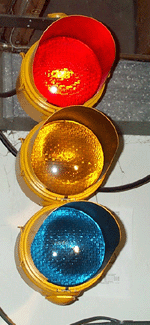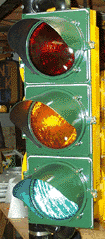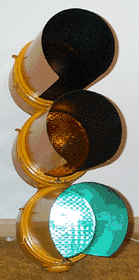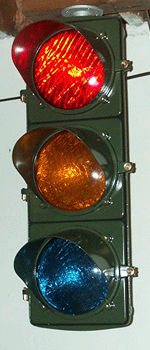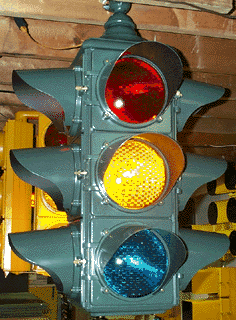G. E. Traffic Signals
|
|
This beacon was in very good condition when it was acquired which made for a fairly easy job in restoring it. It has been repainted and new cloth door seal has been put on. A cloth rope like material was used for before rubber became widely used to keep the weather out of old signals. For more info and pictures of this signal click here. |
|
|
Here is a General Electric 4 way signal. This signal is similar to the beacon shown above. If you want to see more pictures of this signal click here. |
